If heading off the beaten track on a pioneering adventure is your type of travel, then look no further than a trip to the Land of Blue Skies, where wild landscapes are home to hospitable nomads and Western tourists are still a rarity. Mongolia is sure to leave you spellbound.
-
Mongolia’s wide-open spaces, sprinkled sparingly with sheep, goats, and the odd yurt, are a stunning canvas on which we can design the adventure of a lifetime. We’ll introduce you to the locals – nomadic families, Buddhist lamas and eagle hunters – and use various modes of transport, including jeeps, ancient Russian furgons, camels and of course horses, to show you hidden corners of this remarkable nation.
Outside the quirky capital Ulaanbaatar, or UB as it is popularly known, it’s much harder to get around which is why we work with a trusted and experienced in-country team to allow you to get the most out of your trip. We’ll take you round to the less explored shores of Lake Khovsgol for sailing or rowing excursions, set up a VIP ger for you at Sagsai Eagle Festival, show you the dunes of Khongoryn Els by camel and even arrange an encounter with the last of the ‘Tsaatan’ Reindeer herders.
Wix Squared has some exceptional guides to get you under the skin of the country including:
- Local nomads to introduce you to their traditional way of life
- Mongolian horsemen to take you for an adventure in the saddle
- Politicians and social activists to uncover the complexities of modern-day Mongolia
- Local palaeontology experts and archaeologists
- A shaman specialist to explain the intricacies of a shamanism ceremony
- Historians to show you priceless Turkic artefacts from the pre-Chinggis Khan era
- Birding guides and biologists specialising in Mongolia’s natural world
- Trekking guides to take you off the beaten track
- Camel herders to lead the way through the Gobi Desert
-
Itinerary Starting Price
From £2,700 per person, for 7 days including accommodation and private transfers (not including flights).
Random Fact
Mongolia is home to more horses than people. Its human population numbers just 3 million, over half of which live in the capital.
Festival
Nadaam – a summer festival showcasing Mongolian sporting prowess, focusing on wrestling, riding, and archery.
What to Eat
Khorkhog, a traditional Mongolian dish of lamb, barbecued using hot stones.
What to Read
‘In the Empire of Genghis Khan’ by Stanley Stewart, describes the author’s journey through the countries created by the Mongol empire.
What to buy
Kazakh textiles from the Altai Mountains, or why not have a tailor run you up a traditional Mongolian jacket.
-
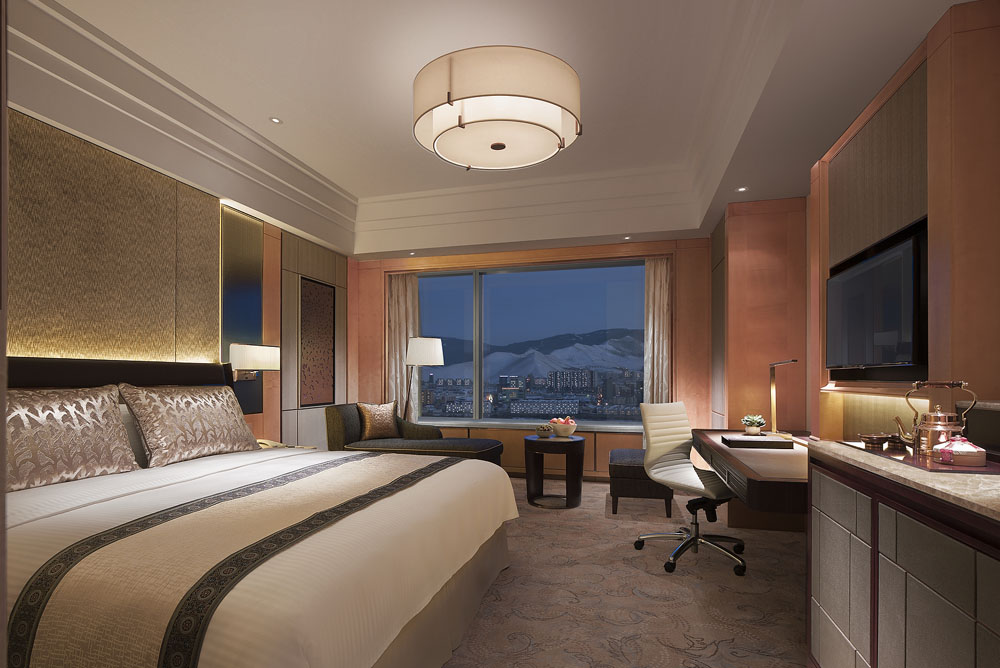
Ulaanbaatar
Since Mongolia’s capital, Ulaanbaatar, acts as a hub through which you’ll access each of Mongolia’s regions, you’re likely to spend at least a few nights here. 5* city hotels of the level you may be used to are few and far between, but the Shangri-La is excellent, with a pool, several choices of restaurant and very good service. A few rungs below, the Tuushin Hotel is a more basic option.
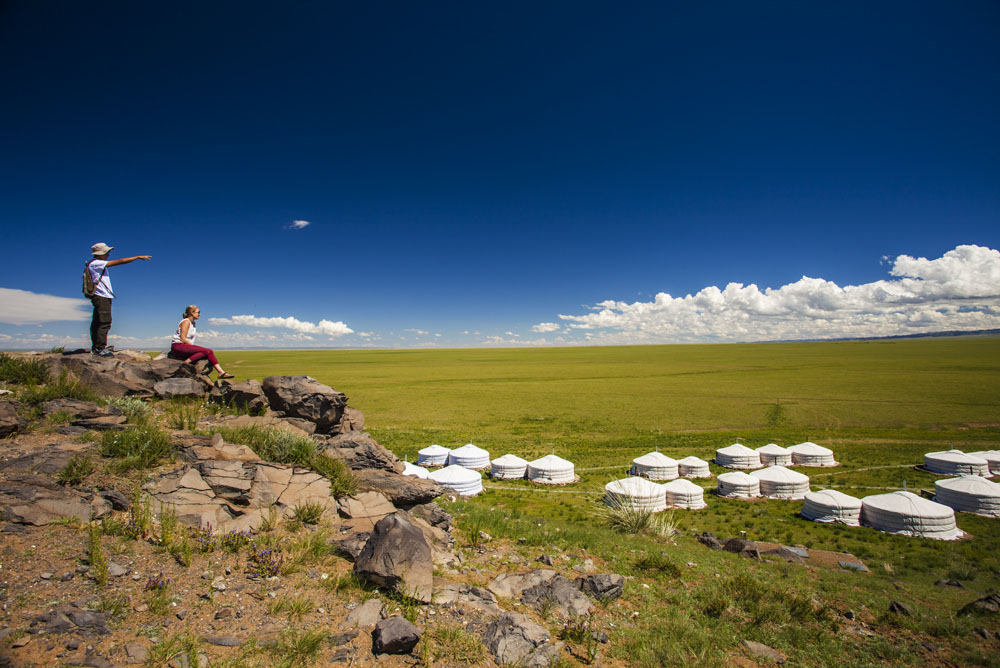
Ger camps
Ger camps are camping grounds with anything from 12 to 30 (or more) gers and a large communal ger for communal dining. Bathroom facilities vary from a central block to separate private bathroom gers or a ‘posh’ long drop. Some camps also offer en suite options, like 3 Camel Lodge. It’s the standard accommodation option once you leave the city and, although there aren’t many frills, gers are warm and comfortable and there’s a friendly atmosphere.
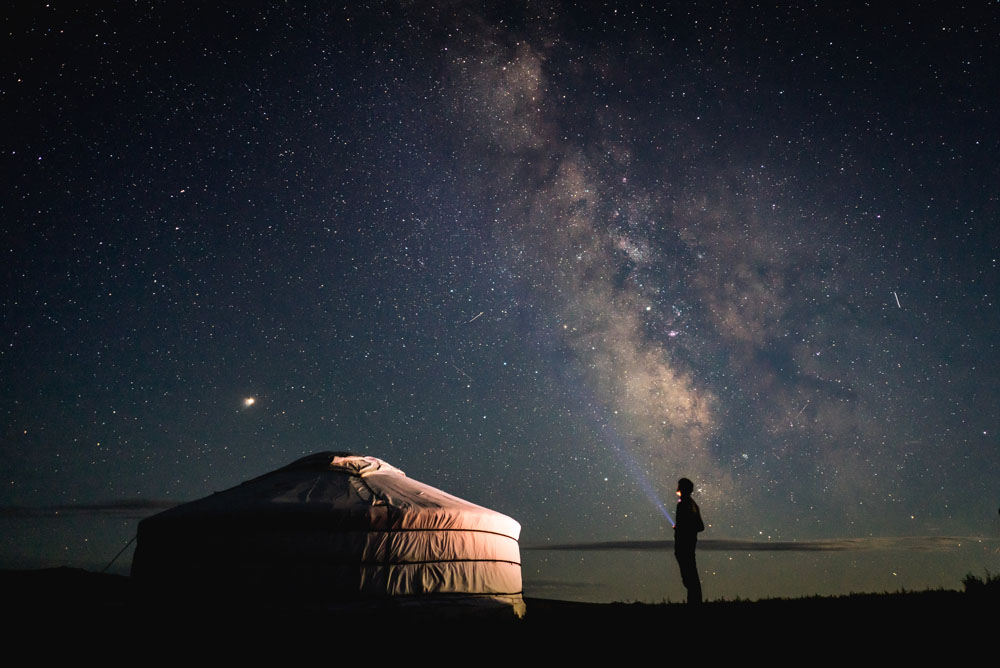
Private camps
For a little bit of magic, we can arrange for you to stay in a private ger camp set up in a remote location within the Mongolian wilderness. This is glamping at its most special and exclusive. Perhaps you’ll stay at the bend in a river or on the rise of a hill in the shelter of a copse of yellow beech trees. Your private chef will cook your meals to order while your ger comes complete with cashmere blankets, antique furniture, and a hot water shower next door.
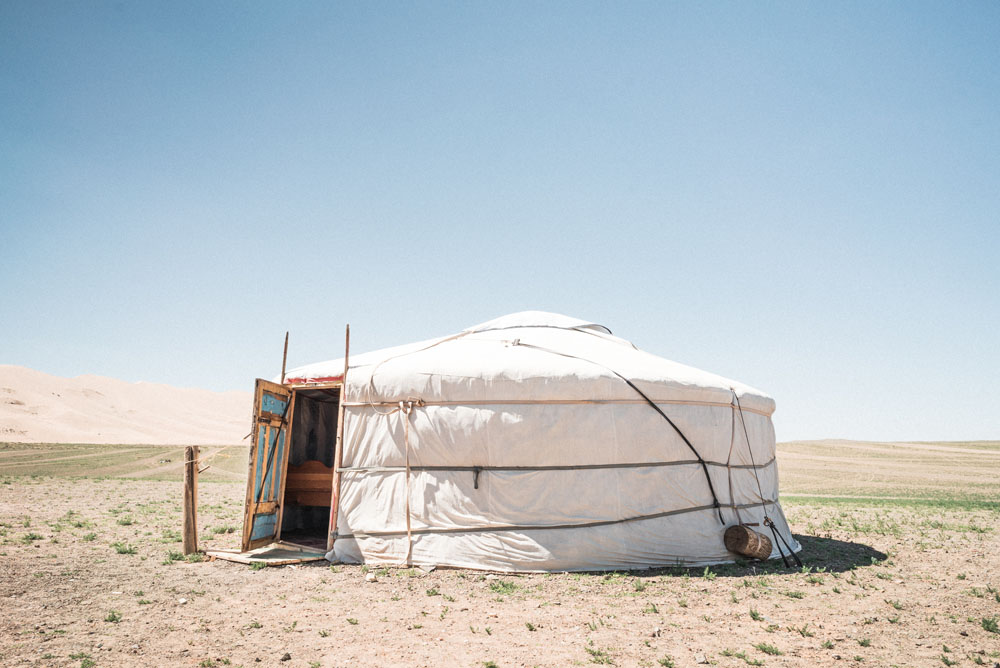
Family stays
Staying alongside a nomadic herder and his family is an incredibly unique and humbling experience. You’ll have a private ger set at a comfortable distance from the family home and can join in with family life as much or as little as you wish. You may find yourself learning to herd goat on horseback, erecting an additional ger or helping the herder’s wife to make ‘buuz’, Mongolian dumplings, for dinner.
-
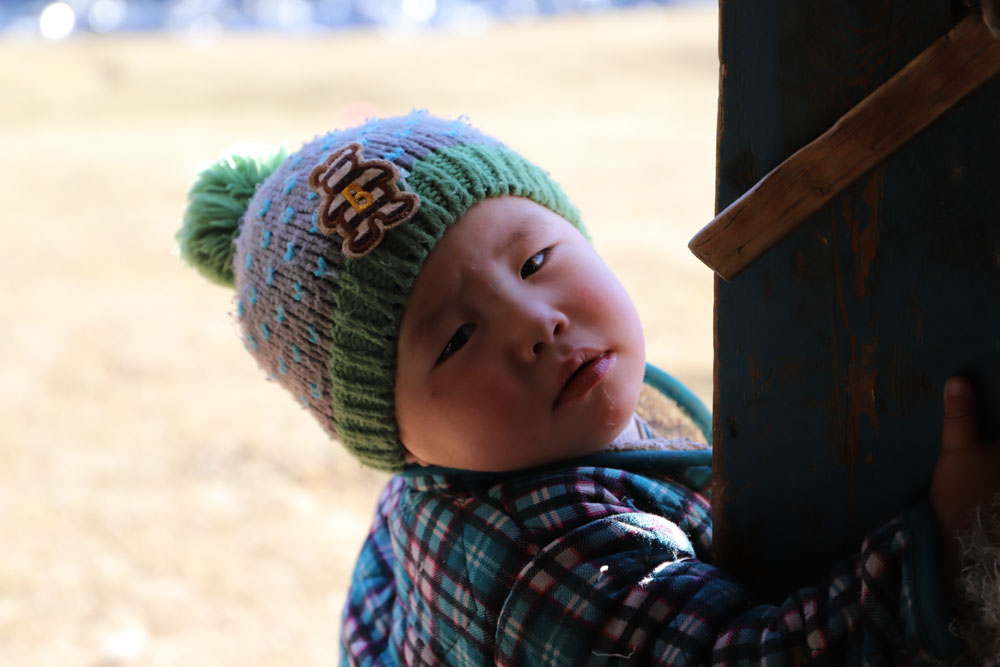
Nomadic culture
There aren’t many places left in the world where a considerable amount of the population still adheres to their traditional nomadic lifestyles. This simple way of life is a unique and cathartic experience to witness, and we thoroughly recommend spending at least one night of your trip staying alongside a local family, helping with daily chores such as cooking, herding their livestock or setting up a ger from scratch – a major operation.
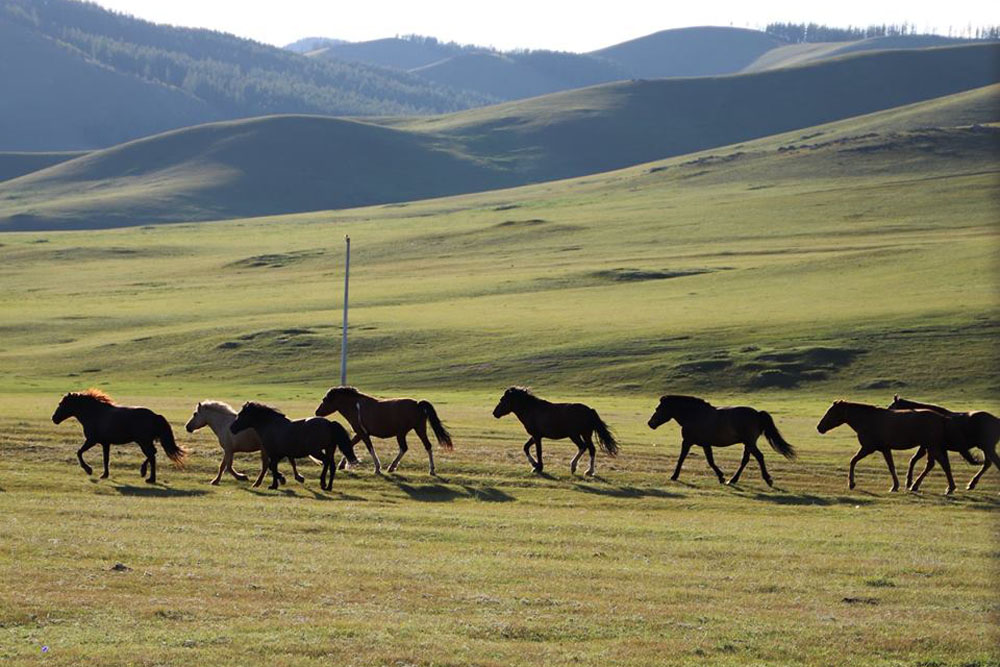
Horse riding
Mongolians live and breathe horses and children learn to ride almost before they walk. It’s a backstop of their culture and a horse is the family’s prized possession. We think it’s also a great way to discover the countryside whether you want a brisk gallop across the steppe or a gentle walk through the forest. Whilst Mongolian horses aren’t the most beautiful of breeds, they’re stocky, hardy, and able to carry a surprising amount of weight considering their size.
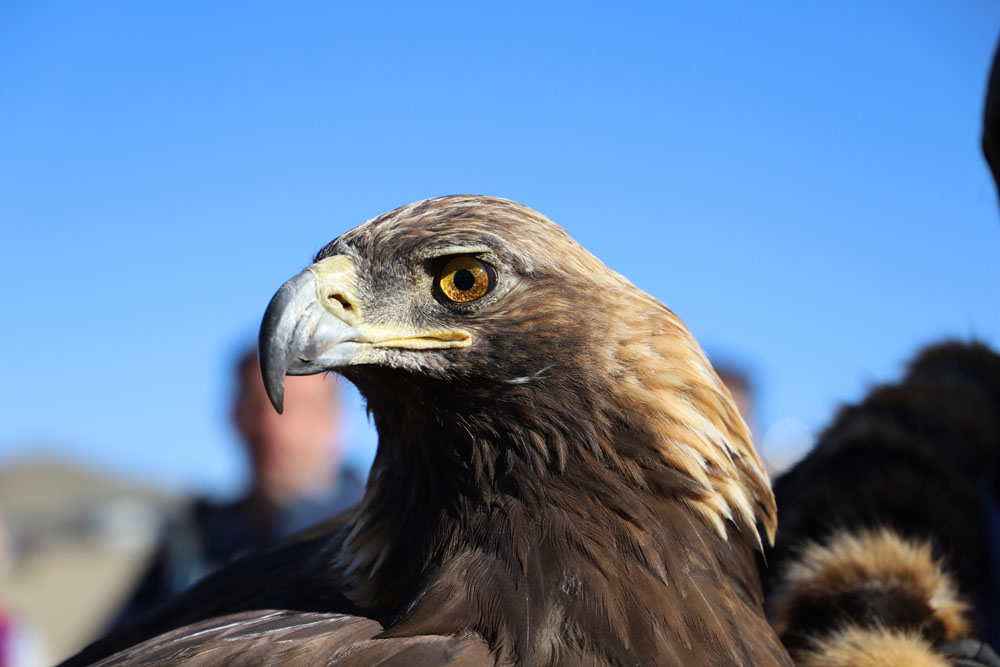
Colourful festivals
Mongolians know how to throw a party. In summer months, they gather on the steppe to celebrate ‘Nadaam’, where they demonstrate their three major sporting activities: riding, wrestling, and archery. Later in the year, Kazakhs gather for a masterful display of man’s bond with one of nature’s most impressive creatures, the golden eagle. Besides this, there are camel races, displays of horsemanship and bushkashi, a tug of war on horseback.
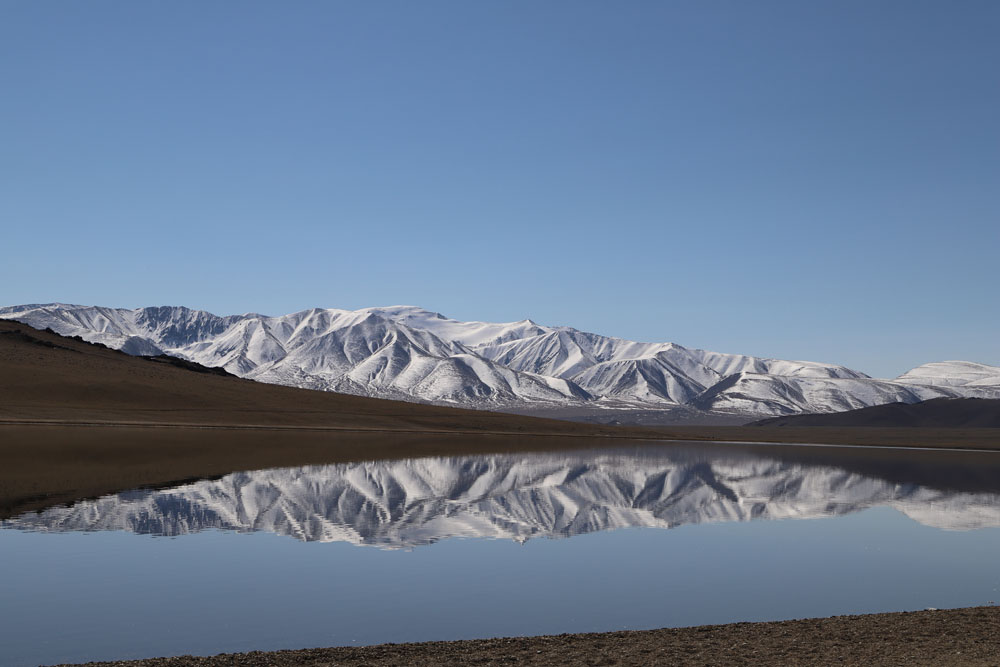
Wild landscapes
From the rolling steppe where herds of galloping horses race the windswept clouds to the fossil-scattered dunes of the Gobi Desert to the dramatic barren slopes of the Altai mountains, each of Mongolia’s regions has its own distinct beauty. These mesmerising landscapes play host to a diverse selection of wildlife including the Przewalski’s horses of Khustai Nuruu National Park, brought back from the brink of extinction, Argali Mountain sheep and golden eagles.
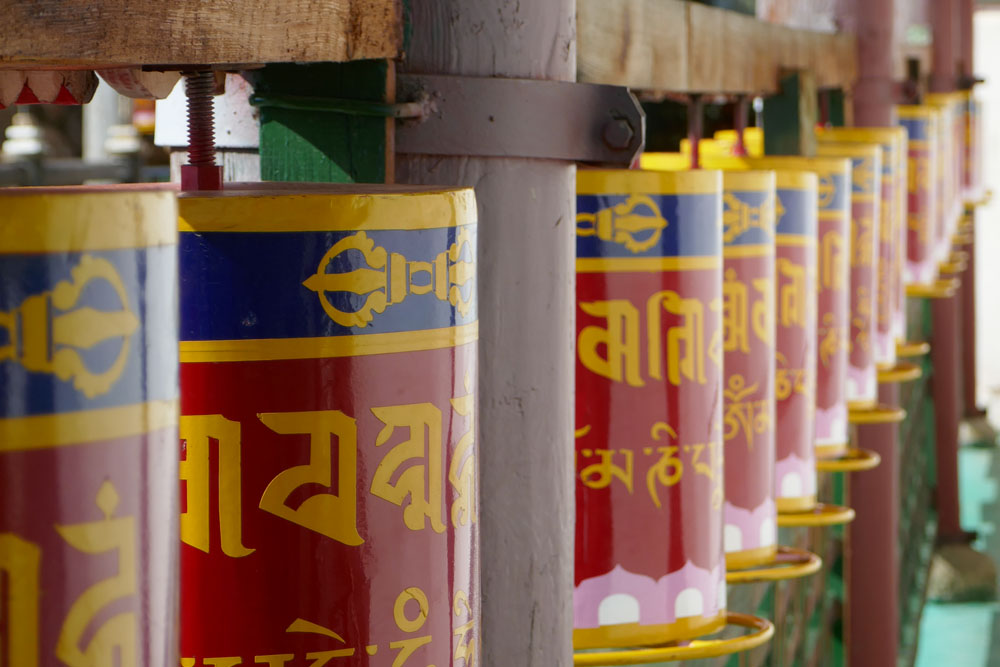
Monasteries & Temples
It’s the impressive landscapes that really steal the show, but Mongolia has a fine collection of architectural wonders too. The working monastery of Ghandan Khiid, in Ulaanbaatar, is a striking example of how relevant religion still is today, whilst the ancient, ruined capital of Kharkhorin is home to Erdene Zuu, the earliest surviving Buddhist mona.
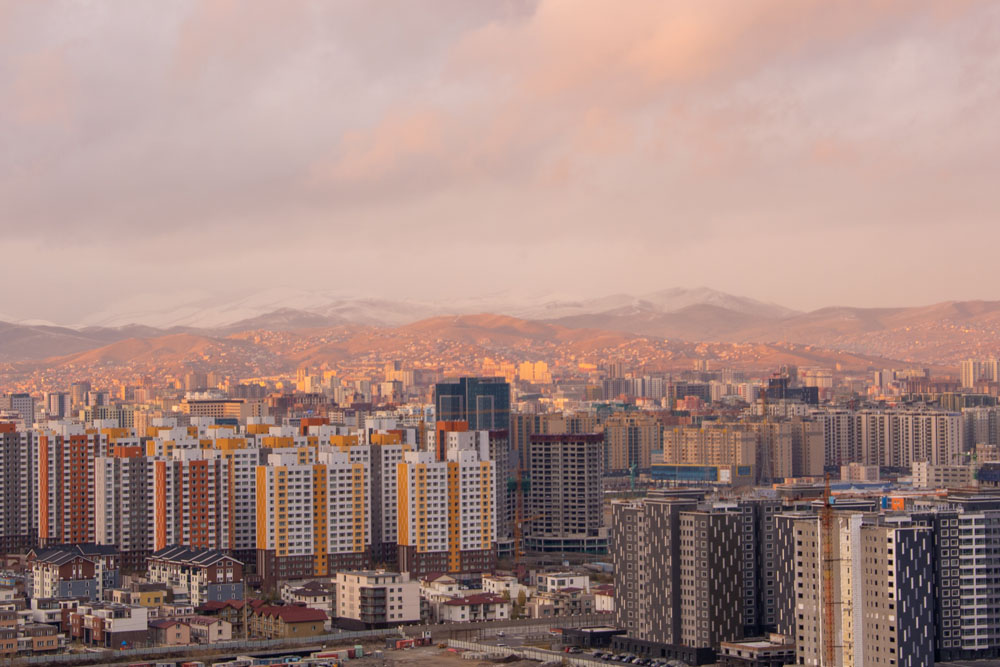
City life
It’s easy to overlook Ulaanbaatar, with its sprawling, chaotic streets, and polluted winters, but this is in fact a city of eclectic juxtapositions where horsemen in traditional deels and pointed boots stand side by side at traffic lights with businessmen in shiny suits, and skyscrapers tower over ancient temples. Let us show you the hidden vibrancies and dynamism of this ambitious metropolis.
-
Mongolia boasts more horses than people and its wide-open spaces, and slower pace of life will be a welcome relief after the excitement and break-neck speed of modern China. Take a short flight from Beijing or hop aboard the Trans-Mongolian Express and journey to Ulaanbaatar.
You’ll be hard pushed to find a country combination quite so contrasting as Japan and Mongolia. Flying from Tokyo directly into the capital, Ulaanbaatar, you’ll exchange slick sophistication for rustic charm. If food is important to you, we recommend keeping Japan for your second destination.
With direct flights straight into UB, Hong Kong will be an adrenaline rush of excitement either before or after an altogether slower and gentler experience that a week or two in Mongolia will provide. Leave civilisation and creature comforts behind or return to them after a week living a simpler existence.
-
Mongolia isn’t traditionally a destination you’d perhaps think of for a special celebration as its facilities and venues for such an event are unsurprisingly limited. That said, our trusted network of contacts on the ground is invaluable in helping us create something unique in such a logistically challenging environment.
Whether it’s a ger camp takeover for a family reunion or exclusive private access to a museum for a milestone birthday dinner, we’ll turn your vision into a reality.
Find out more about Events by Wix Squared

Weather
The best time to visit Mongolia is May-October. Cloudless blue skies are the norm and rainy days are sparse.
Mongolia’s extreme climate variations mean that, except for those pursuing a few specialist activities, the country all but shuts down to tourists from November-April when temperatures can reach as low as -40 °C.
In summer, down in the Gobi Desert, temperatures can climb to a scorching 40°C.
The most rain falls in July and August in short, sharp bursts.
- Travelling to Mongolia in January is not recommended. Freezing temperatures ensure the closure of most ger camps and guest houses. The pollution in Ulaanbaatar is particularly bad. Dog sledding, ice skating and skiing are all possible.
- The temperatures are still bitterly cold in February, well below freezing. Few tourists visit during this month and many facilities will be closed. Ulaanbaatar remains under a thick blanket of smog.
- The weather is still cold although it’ll be slowly thawing. Strong winds and dust storms can negatively impact travel during this month and the wind-chill factor can make it seem even colder.
- Temperatures are still cold although things will gradually start to warm up as spring arrives. It’s a month of unpredictable weather conditions with strong winds and dust storms negatively impacting travel.
- The weather in May is changeable. Whilst temperatures are warmer, cold snaps are likely and therefore some ger camps remain closed. On the other hand, tourists are fewer meaning train and plane tickets are more readily available.
- The beginning of peak season, when the weather is warm and mostly dry, with a few thunderstorms. Tourist numbers will increase sharply (as will prices), and accommodation and tickets must be booked in advance.
- The tourist season is in full swing, and you can expect to meet plenty of fellow visitors. There’ll be a good deal of choice in terms of accommodation but this, and tickets for planes and trains, should be booked in advance. Prices will also increase.
- Another month of great weather, although in the last week or so, things will become cooler and rainfall will increase, especially in the capital. This the final month of lush, green scenery as autumn is just around the corner.
- Similarly to May, the weather in September is changeable. It’ll be cooling down and cold snaps are likely, therefore some ger camps will have closed. On the other hand, tourists are fewer meaning train and plane tickets are more readily available.
- By October the temperatures will have cooled down considerably and the peak season will be over. The main Eagle Festival in the Altai Mountains takes place during this month.
- Whilst temperatures will be below freezing, this is the best time for those who want to experience a snowy Mongolian winter as it will not yet be at its coldest. Most ger camps and guest houses will have closed but dog sledding, ice skating and skiing are all possible.
- Travelling to Mongolia in December is not recommended. Freezing temperatures ensure the closure of most ger camps and guest houses. The pollution in Ulaanbaater is particularly bad.










